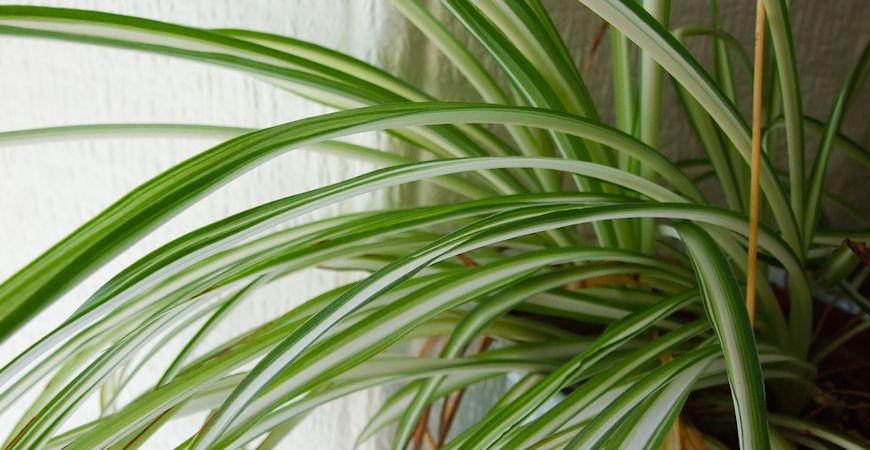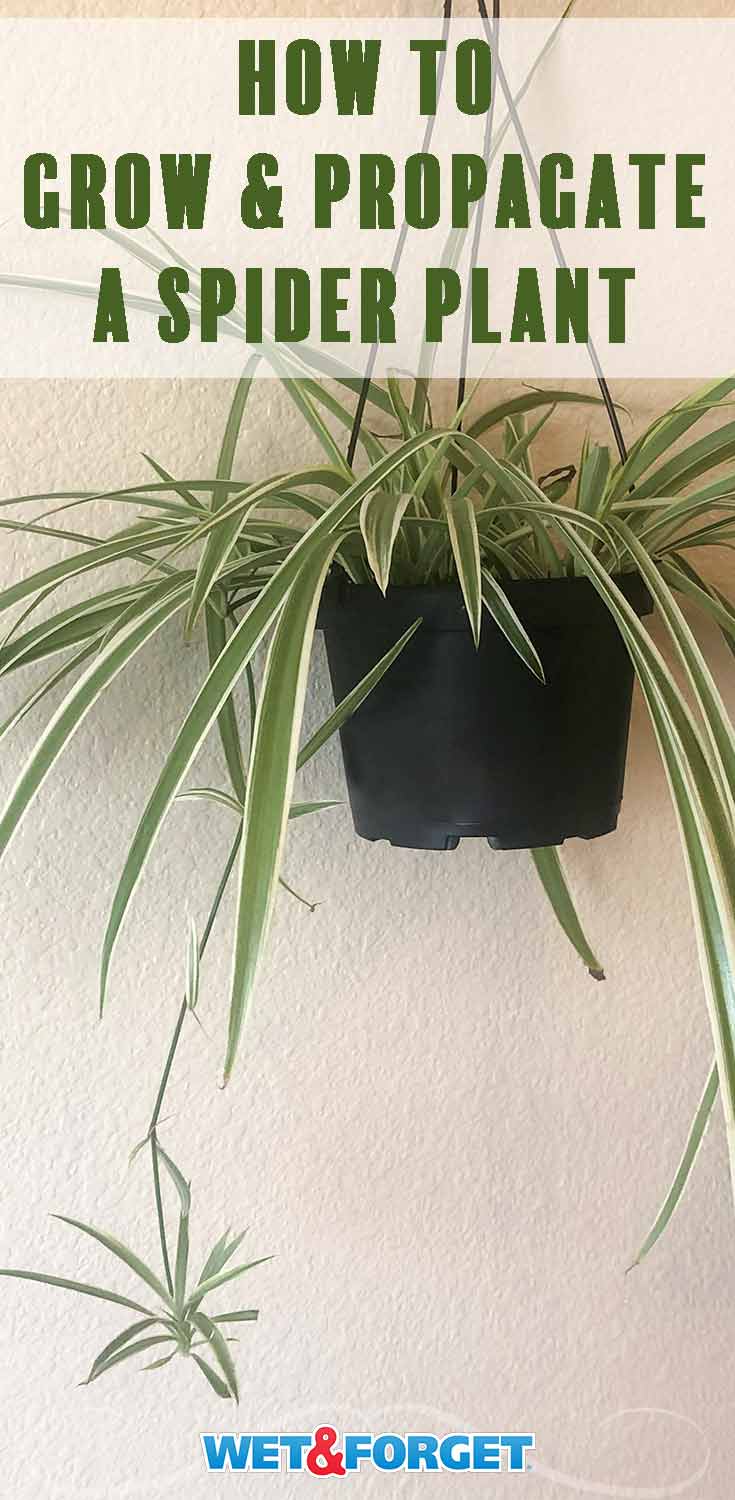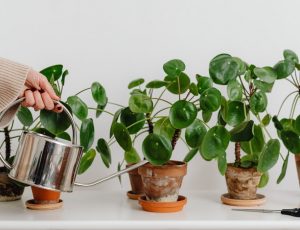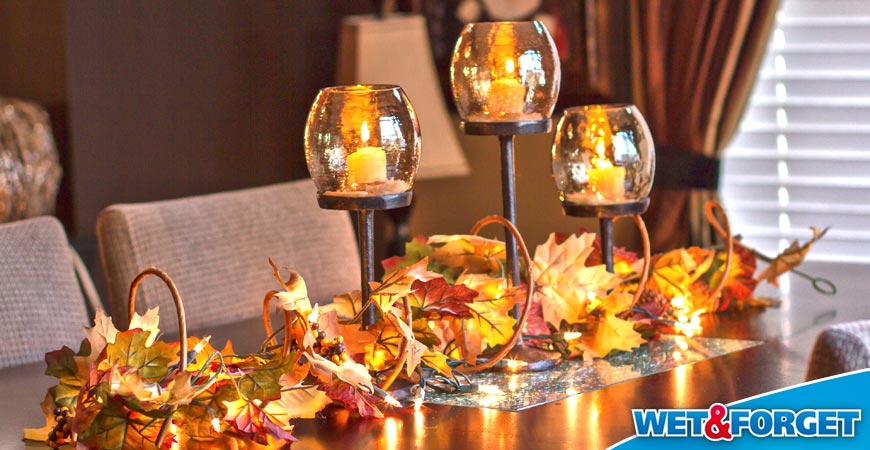
Top Tips for Taking Care of your Spider Plant
No wonder spider plants are so popular: Not only are these willowy beauties a delight to look at—they are also champion air-scrubbers that benefit your home’s air quality.
The right type of TLC will keep your spider plant looking great and doing its job. Here’s how to care for your spider plant, so it can take care of you!
Spider Plants: The Perfect Houseplant?
While spider plants are only able to survive outdoors in very warm climates such as in Puerto Rico (they’re perennial in USDA hardiness zones 9 through 11) they seem almost to have been designed to be the perfect houseplant.
They grow very well at room temperature and in indoor humidity levels and, unlike a lot of plants, spider plants tolerate artificial light very well, making them perfect even for windowless offices. You can grow a spider plant in a pot on your desktop or in a windowsill, allowing its long leaves to cascade down the side, or put it in a hanging basket where it can really show off its waterfall-like quality.
And it won’t just sit these looking pretty: NASA scientists rated the spider plant above all other houseplants they tested when it came to removing harmful chemicals such as formaldehyde from indoor air.
Spider plants are also one of the most low-maintenance houseplants available, so a little care goes a long way. Here are our top spider plant care tip to help you get the most out of your spider plant:
The Right Container
Hanging baskets make the perfect home for your spider plant. They allow the plant enough space to cascade freely over all sides of the pot, as is its nature.
A hanging basket will also give you the opportunity to appreciate your spider plant’s full potential in the appearance department. If you don’t have a good spot for a hanging basket, your spider plant will also do well in a pot in a place that allows it some room to cascade, such as on a stand, on the edge of a desk, or on a windowsill.
Spider plants like to be root-bound, so don’t transplant your plant into a large pot.
Water
Spider plants don’t need much watering to stay healthy. Depending on how dry and sunny your home or office is, you will need to water your spider plant about every 10 to 14 days.
Wait until the soil is nearly dry, and then wet the soil thoroughly without allowing it to become waterlogged. If your tap water has a high salt content, distilled water may be a better choice for your spider plant.
Salt or fluoride in water can cause leaf tip burn in spider plants.
Light
Spider plants are one of the few plants that do very well in artificial light, which makes them wonderful office plants. Even if your office doesn’t have a window, your spider plant should thrive as long as there is plenty of artificial light.
It just won’t produce as many “baby plants” as it would normally produce in natural light.
Soil
Unlike many other houseplants, spider plants aren’t picky at all when it comes to soil. Any good potting soil that is made for indoor plants should be just fine for your spider plant, as long as it drains well.
The Farmer’s Almanac recommends fertilizing your spider plant occasionally during spring and summer, but be careful not to over-fertilize.
Pests
Spider plants don’t typically have a problem with pests, although some people have reported issues with scale or mealybug. You can eliminate scale bugs by pruning infected leaves and stems, or simply picking the pests off by hand or rubbing them with alcohol swabs or neem-based leaf shine in the case of light infestations.
For mealybugs (see photo above), you can also pick the pests off by hand or rub them with an alcohol swab. Another option is to gently wash the affected plant using a solution of 2 teaspoons of mild dish detergent per gallon of water and a soft brush or cloth.
There are also commercial products that kill mealybugs; look for a spray that is for houseplants, and make sure that it specifically says that it kills mealybugs.
How to Propagate a Spider Plant
Spider plants are easy to propagate. The easiest way to grow a new spider plant is to wait until one of the “babies” that dangle from your spider plant grows little roots on the bottom.
Plant the baby in a small pot with good potting soil and keep the soil consistently moist, but not saturated, until the plant has had a chance to develop a mature root system. Then resume normal care.
For a nice, full look, plant a few babies in the same pot, evenly-spaced apart.
More Tips
- If your spider plant doesn’t look as full and bushy as you’d like it to, fill it out by adding a few “babies” to the pot alongside it.
- Spider plants are considered non-toxic for pets, unlike many houseplants. Still, your spider plant doesn’t make a good snack for Felix or Fido.
- Don’t let too many “babies” hang out on your spider plant, or they will sap your plant’s energy and make it look less vibrant. Share them with friends, plant them yourself, or trim and discard them.
Keep your Spider Plant, Lose the Spiders!
You love your spider plant, but that surprise visit from the real spider skittering around in your bathtub? Not so much.
Miss Muffet’s Revenge is the easy way to keep those creepy crawlers where they belong: outside. Miss Muffet’s Revenge keeps spiders away with just one spray for 12 months indoors, or forms a perimeter around your home to keep more spiders from coming in.
It’s the un-welcome mat for spiders! No more chasing spiders with a fly-swatter, no more constant re-applying, and no more smelly aerosols. Showing spiders the door just got easy!
Stop by our website to learn more about our easy solutions to everyday problems, so you can spend less time cleaning and more time gardening!
Photos courtesy of Edward Webb, Christopher Craig, Katja Schulz, Mike Sayre, and OakleyOriginals.
















